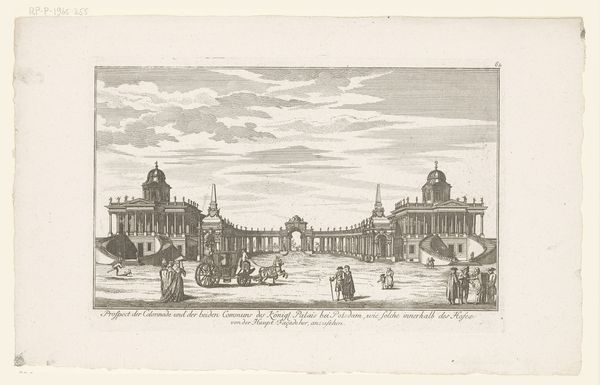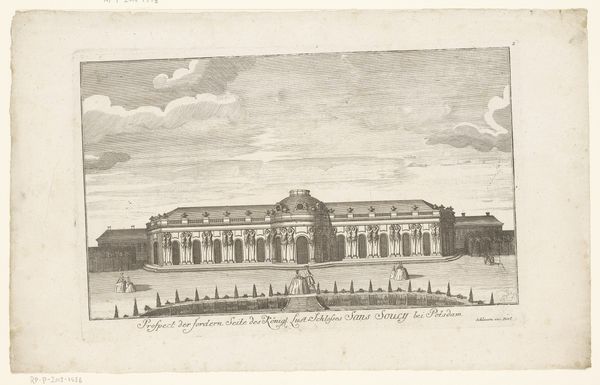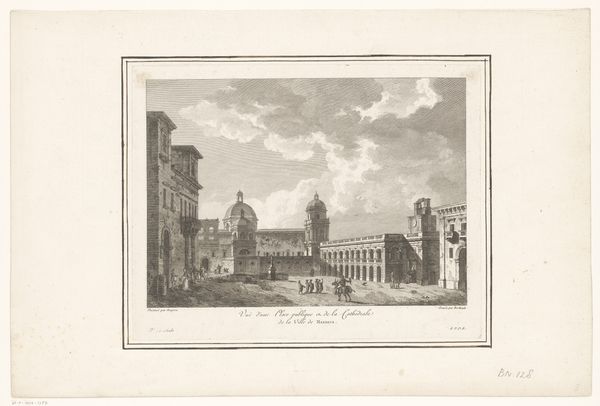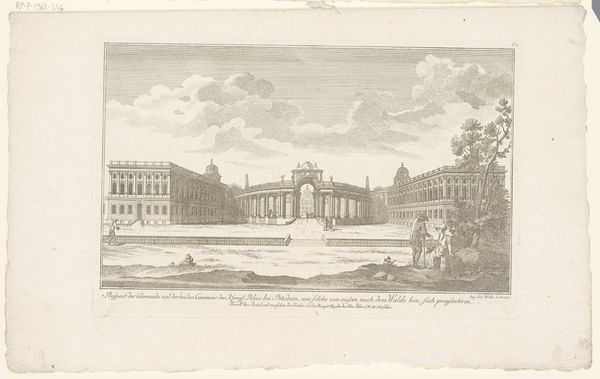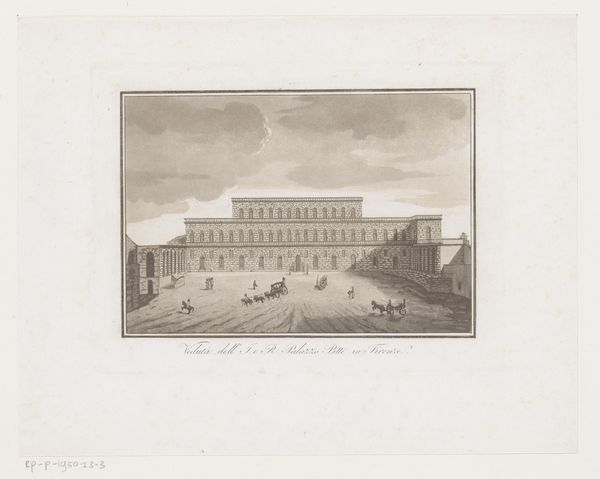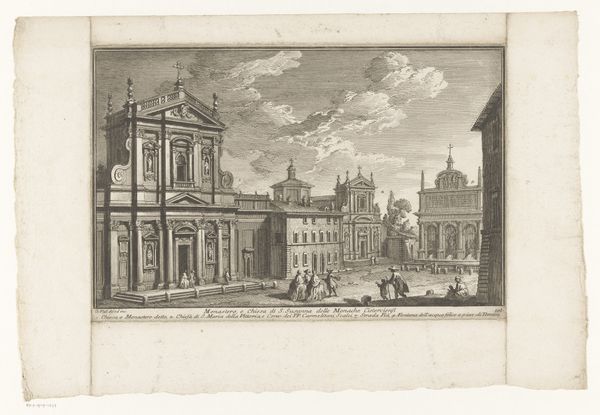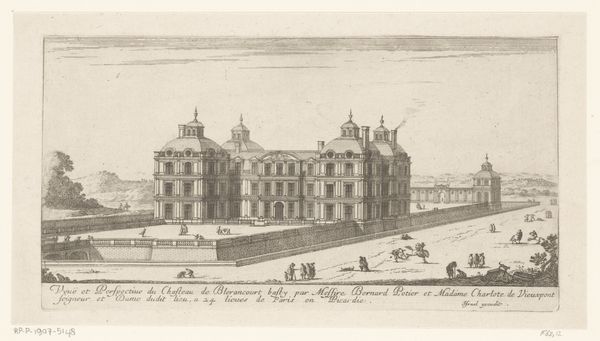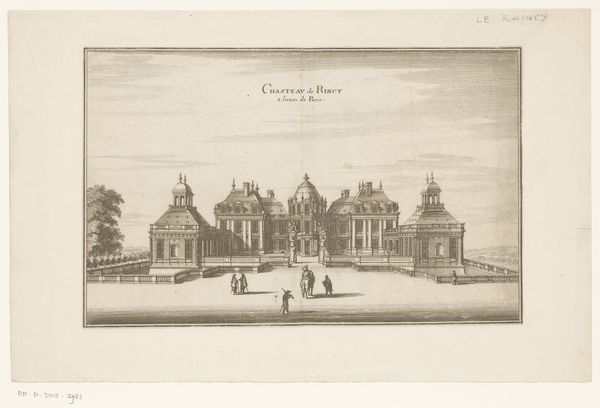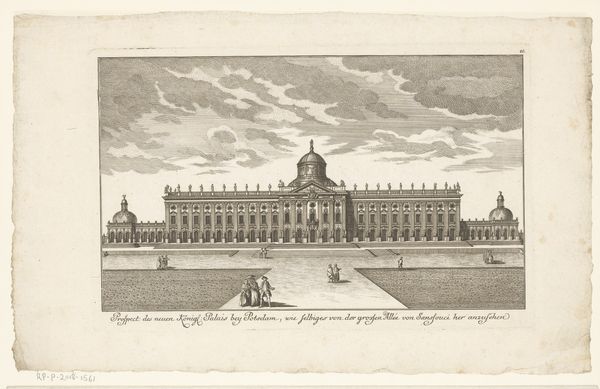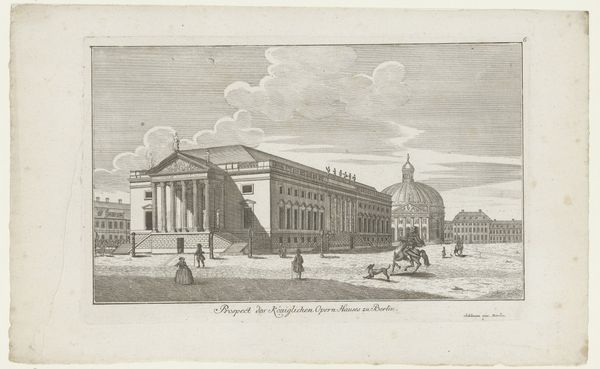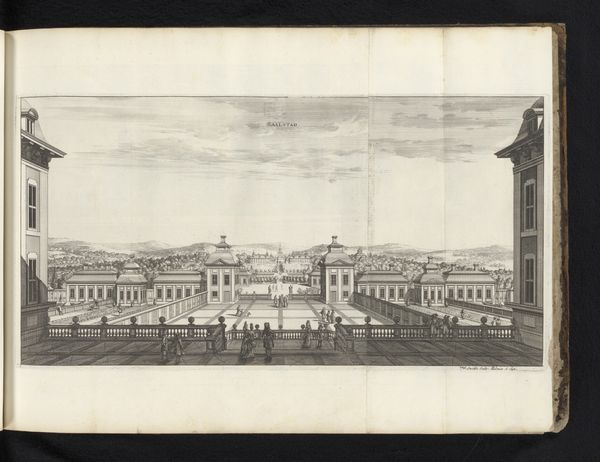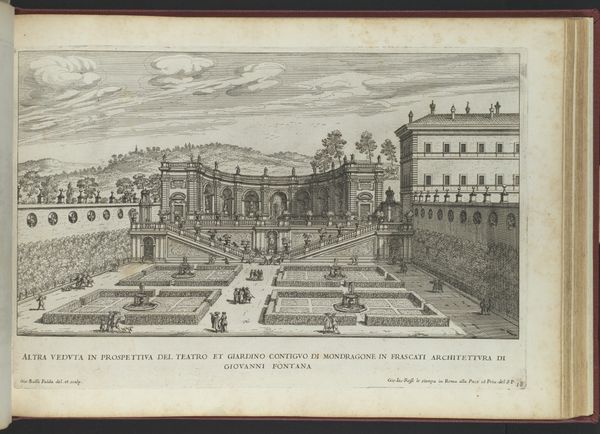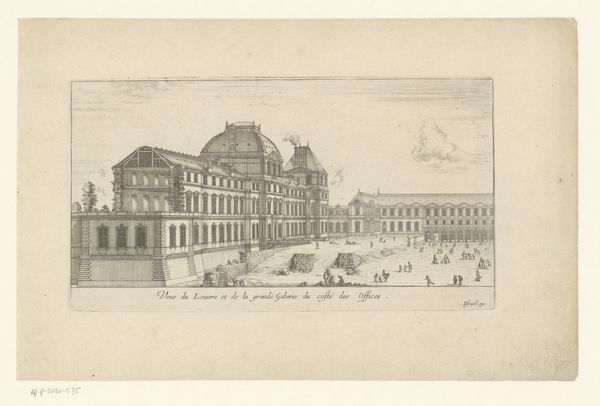
Gezicht op de Communs van het Neues Palais, in het park van Slot Sanssouci 1769 - 1774
0:00
0:00
Dimensions: height 213 mm, width 324 mm
Copyright: Rijks Museum: Open Domain
This print, made by an anonymous artist, depicts the Neues Palais in the park of Slot Sanssouci. The image provides a glimpse into the social and institutional history of 18th-century Prussia. Palaces like this were not just residences; they were powerful symbols of royal authority and nation-building. The Neues Palais, commissioned by Frederick the Great, was specifically intended to announce Prussia’s strength and recovery after the Seven Years’ War. Notice how the architecture emphasizes order and symmetry, reflecting the values of the Enlightenment era, but also a desire to impose control over the landscape and society. The palace was part of a larger project of cultural and political consolidation. Understanding this artwork requires us to look at how art, architecture, and politics intertwined. The visual rhetoric of power played a crucial role in shaping social order. We can analyze the design and purpose of the palace through historical archives and architectural studies.
Comments
No comments
Be the first to comment and join the conversation on the ultimate creative platform.
